Introduction: Why Scarf Tying Skills Matter in Modern Fashion
Learning how to tie a scarf properly is one of the most valuable fashion skills you can master. Whether you're looking to elevate a casual outfit, add sophistication to professional attire, or simply stay warm in style, the right scarf knot can completely transform your look. This comprehensive guide will teach you over 15 different scarf tying techniques, from basic draping methods to advanced styling tricks used by fashion professionals.
Scarves are incredibly versatile accessories that serve both functional and aesthetic purposes. They can add color, texture, and visual interest to any outfit while providing warmth and comfort. With the right techniques, a simple scarf can become your signature style element.
Essential Scarf Tying Basics
Understanding Scarf Types and Sizes
Before diving into specific tying techniques, it's crucial to understand the different types of scarves and how their dimensions affect styling options:
Rectangular Scarves (30" x 80"): The most versatile option for various tying methods Square Scarves (35" x 35"): Perfect for neckerchief styles and head wraps Infinity Scarves: Pre-looped design for easy styling Blanket Scarves (60" x 60"): Oversized options for dramatic draping Skinny Scarves (6" x 60"): Ideal for neck-tie inspired looks
Essential Tools and Preparation
- Scarf clips or pins: For securing complex styles
- Mirror: Full-length preferred for proportion checking
- Good lighting: Essential for color coordination
- Clean hands: To avoid transferring oils to delicate fabrics
15 Professional Scarf Tying Techniques
Basic Techniques (Perfect for Beginners)
1. The Classic Drape
Best for: Casual wear, layering, everyday comfort Materials: Any rectangular scarf
Simply drape the scarf evenly around your neck, allowing both ends to hang naturally. This effortless style works with virtually any outfit and scarf material.
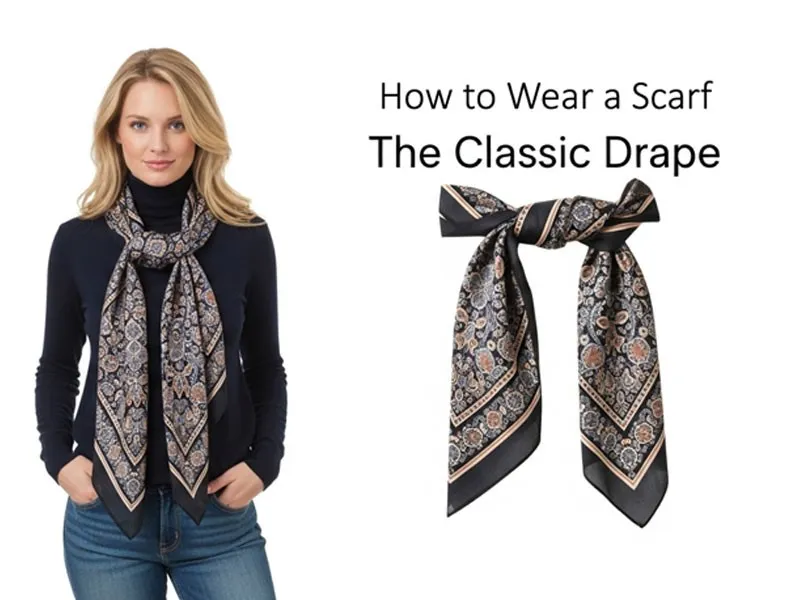
2. The European Loop (Pull-Through)
Best for: Professional settings, structured outfits Materials: Medium-weight scarves
Fold your scarf in half lengthwise, drape around your neck, then pull both loose ends through the folded loop. Adjust tightness as desired.
3. The Simple Toss
Best for: Breezy, casual looks Materials: Lightweight scarves
Drape the scarf evenly around your neck, then toss one end over the opposite shoulder for an effortlessly chic appearance.
This style pairs perfectly with casual outfits, such as sneakers with dresses, for a relaxed yet stylish look.
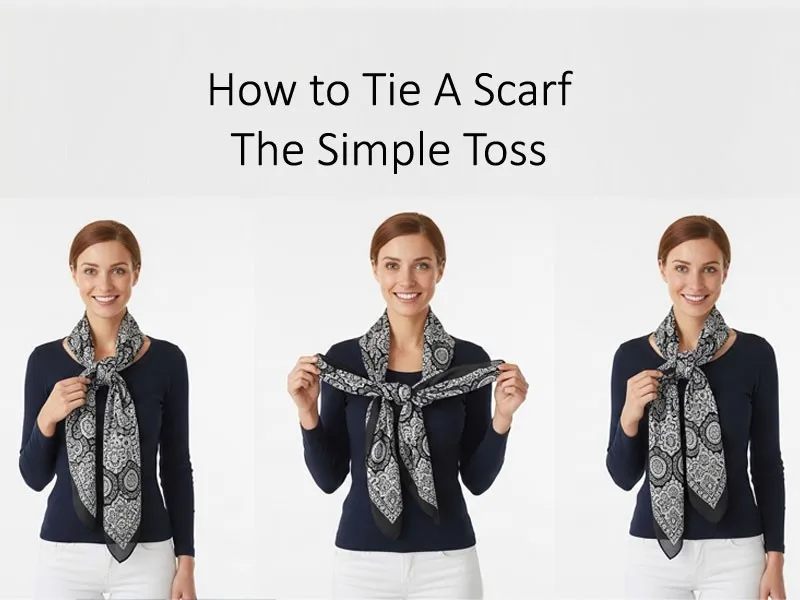
Intermediate Techniques
4. The French Knot
Best for: Sophisticated casual wear Materials: Silk or lightweight wool scarves
Position the scarf around your neck with uneven ends. Tie a loose knot with the longer end, then adjust for comfort and style.
5. The Infinity Loop
Best for: Casual and professional wear Materials: Long, flexible scarves
Tie the ends of your scarf together to create a circle, then loop it around your neck twice for a layered effect.
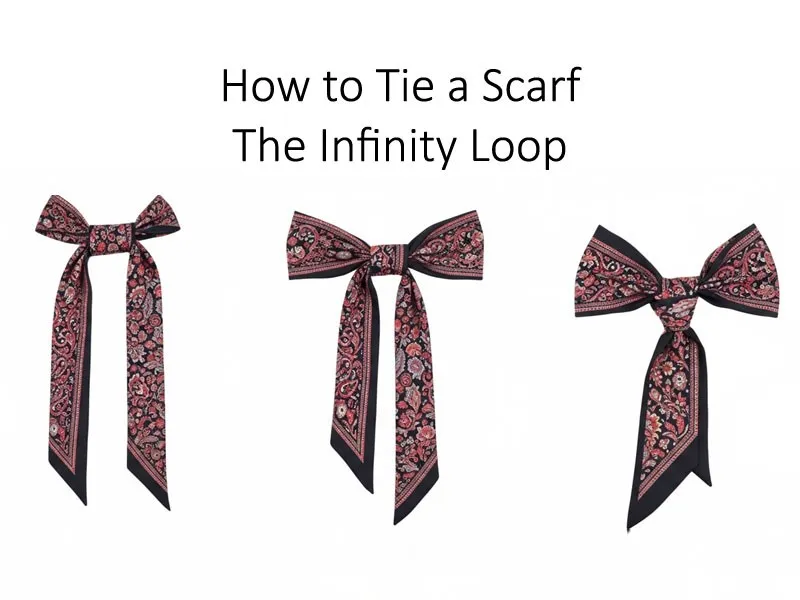
6. The Belted Drape
Best for: Adding structure to flowing outfits Materials: Lightweight to medium-weight scarves
Drape the scarf normally, then add a belt at your waist to create definition and prevent the scarf from shifting.
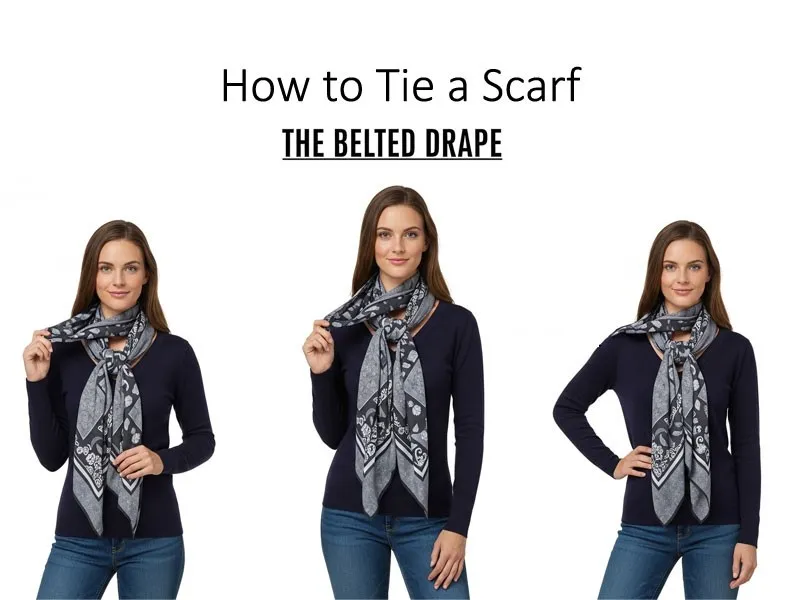
7. The Neck Tie
Best for: Professional settings, borrowed-from-the-boys style Materials: Silk or thin scarves
Create a tie-like knot by wrapping the longer end around the shorter end and pulling it through the loop, similar to tying a necktie.
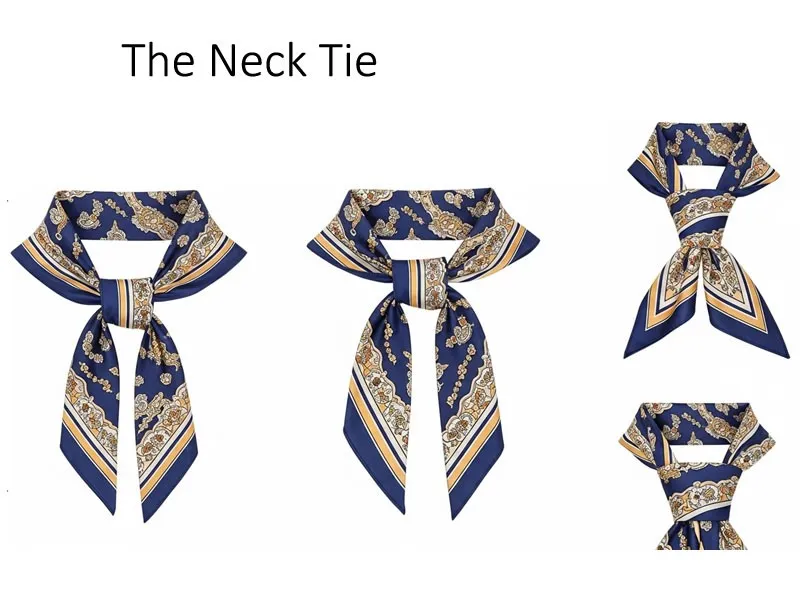
Advanced Techniques
8. The Figure-Eight
Best for: Making a statement, unique styling Materials: Long, flexible scarves
Fold the scarf in half, drape around your neck, pull one end through the loop, twist the loop, then pull the other end through the twisted section.
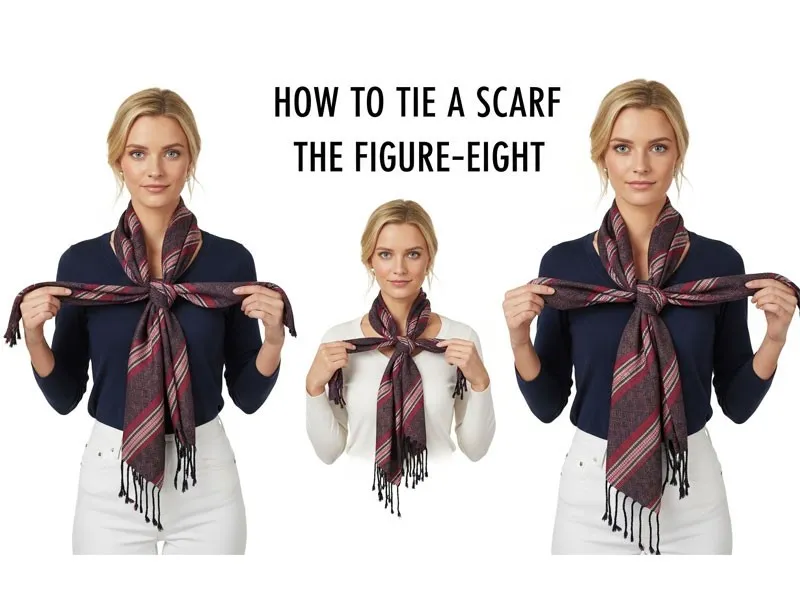
9. The Waterfall
Best for: Dramatic evening wear Materials: Flowing, lightweight materials
Drape the scarf asymmetrically, allowing one end to cascade down while securing the other end with a brooch or pin.

10. The Rose Knot
Best for: Romantic, feminine looks Materials: Silk or chiffon scarves
Create multiple small loops and twists to form a rose-like shape at the neck, securing with small pins if necessary.
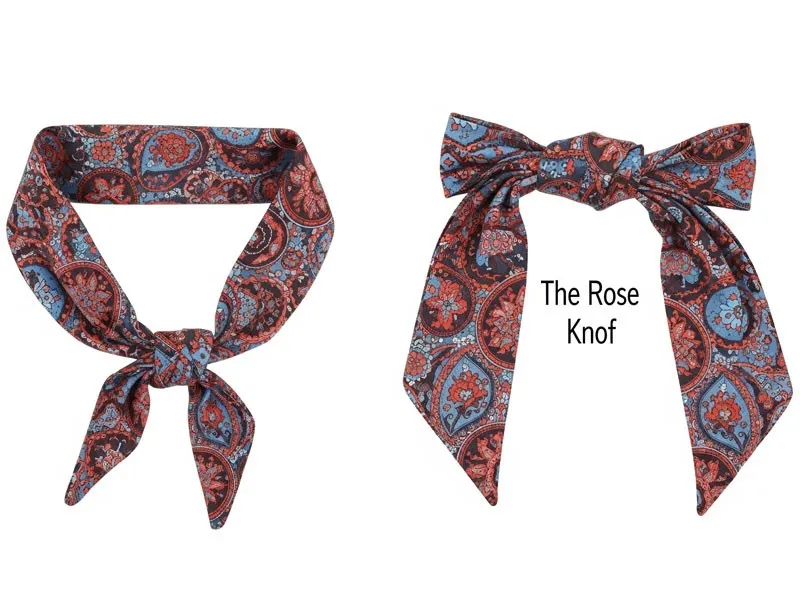
Creative and Unique Styles
11. The Braided Wrap
Best for: Bohemian, artistic looks Materials: Three thin scarves or one very long scarf
Braid the scarf(es) before wrapping around the neck for a textured, interesting appearance.
12. The Shawl Drape
Best for: Elegant evening wear, formal occasions Materials: Large, rectangular scarves
Spread the scarf across your shoulders like a shawl, then bring the ends forward and let them drape naturally.
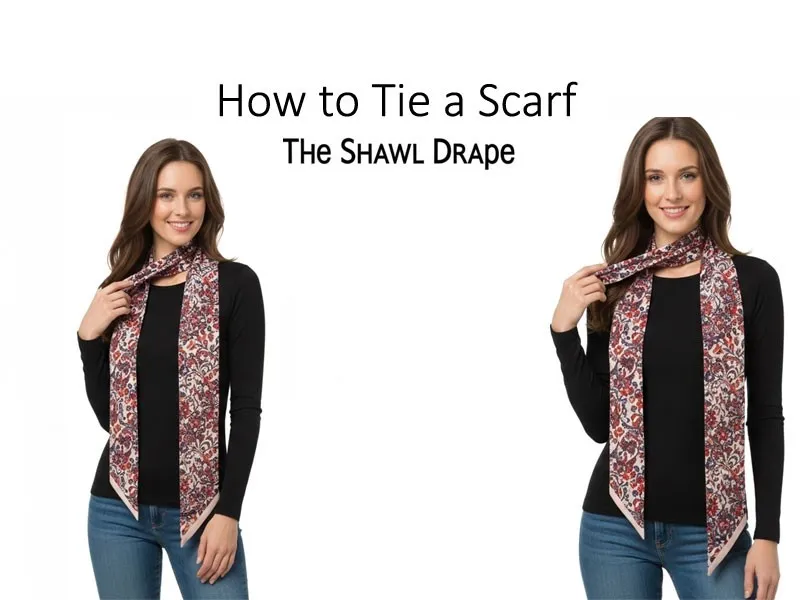
13. The Head-to-Neck Wrap
Best for: Vintage-inspired looks, bad hair days Materials: Large square scarves
Start with the scarf over your head, then bring the ends around to tie at the neck, creating both head coverage and neck styling.
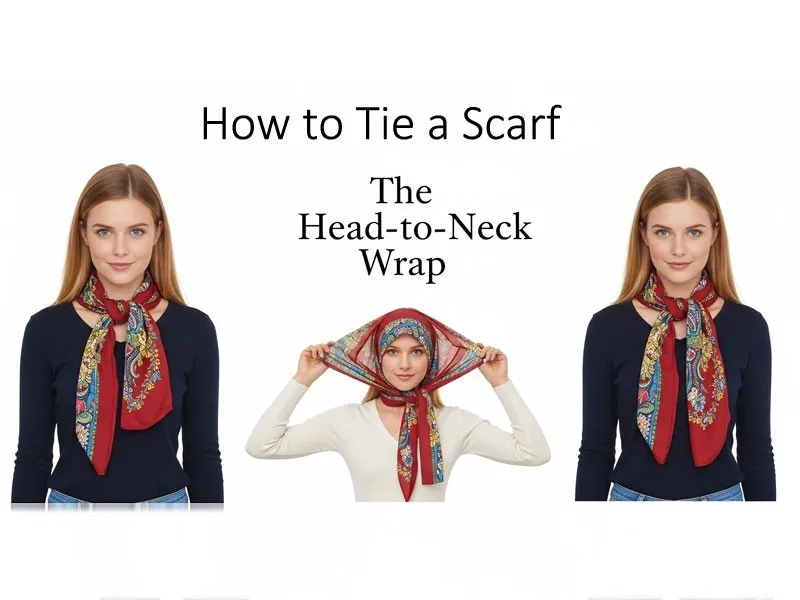
14. The Vest Style
Best for: Layering, creating interesting silhouettes Materials: Large scarves
Drape the scarf over your shoulders, then tie the ends in front at waist level to create a vest-like appearance. This style can be paired with a denim dress for a trendy layered look.
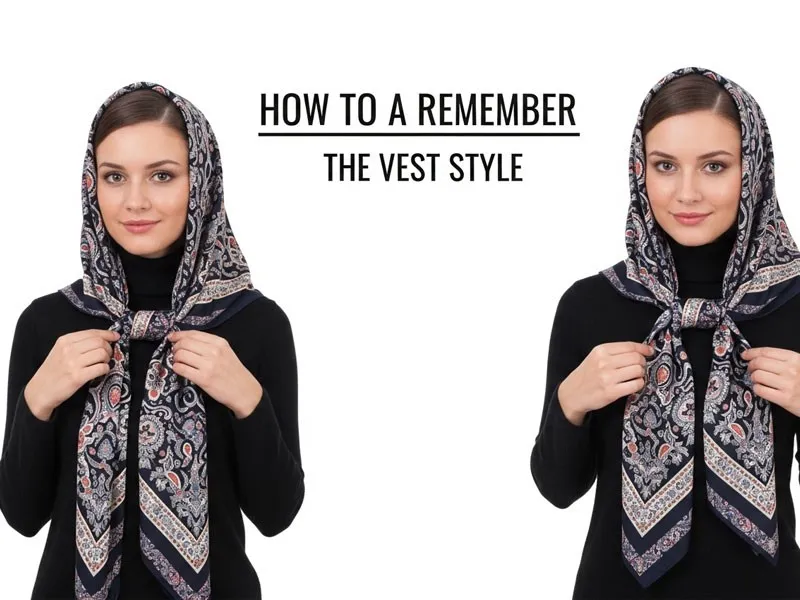
15. The Pretzel
Best for: Cold weather, maximizing warmth Materials: Long, thick scarves
Create multiple loops and twists to form an intricate pattern that provides both style and substantial warmth.
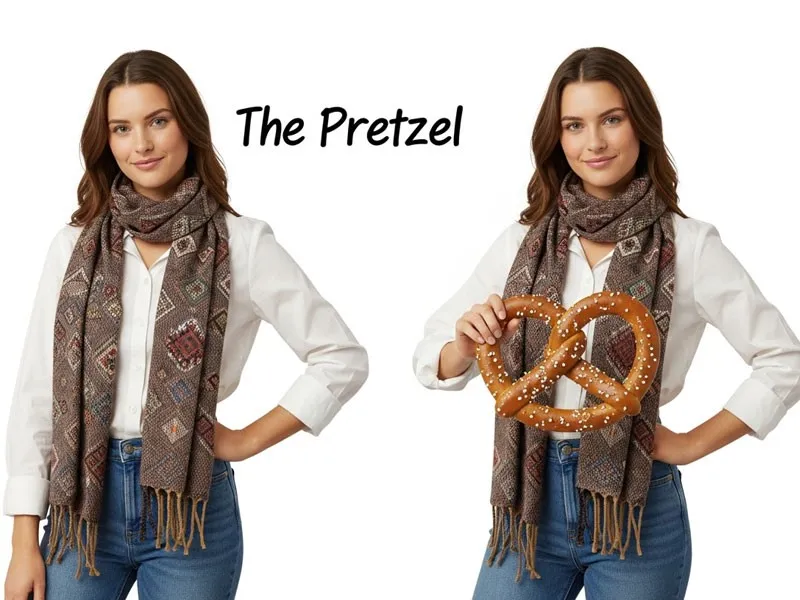
Seasonal Scarf Styling
Spring Styling Tips
- Light fabrics: Choose cotton, linen, or lightweight silk
- Bright colors: Embrace pastels and vibrant hues
- Loose draping: Avoid heavy knots that add bulk
- Floral patterns: Perfect for the season's aesthetic
Summer Scarf Solutions
- Evening styling: Light scarves for air-conditioned spaces
- Sun protection: Drape over shoulders for coverage
- Beach wraps: Versatile sarong-style tying
- Breathable materials: Stick to natural fibers
Fall Fashion Forward
- Layering mastery: Combine with jackets and coats
- Rich textures: Wool, cashmere, and alpaca
- Earth tones: Embrace autumn color palettes
- Transitional styling: Adapt techniques as temperatures drop
Winter Warmth Techniques
- Double wrapping: Multiple loops for insulation
- Tuck and secure: Keep scarves inside coats
- Thick materials: Prioritize warmth over style when necessary
- Protective styling: Cover exposed skin areas
Fabric-Specific Styling Guide
Silk Scarves
Characteristics: Smooth, lustrous, drapes beautifully Best techniques: French knots, neck ties, flowing drapes Care tips: Gentle handling, avoid excessive pulling Styling notes: Perfect for professional and elegant occasions
Wool and Cashmere
Characteristics: Warm, structured, holds shape well Best techniques: Loops, wraps, substantial knots Care tips: Allow to settle after tying, avoid tight knots Styling notes: Ideal for cold weather and textural interest
Cotton and Linen
Characteristics: Casual, breathable, easy to manipulate Best techniques: Relaxed draping, braided styles, casual knots Care tips: Can handle more manipulation than delicate fabrics Styling notes: Perfect for everyday and casual wear
Synthetic Blends
Characteristics: Durable, often wrinkle-resistant, affordable Best techniques: Various options, good for practicing Care tips: Follow manufacturer instructions Styling notes: Great for experimental styling
Product Recommendations
Best Scarves for Beginners
1. Universal Basic Scarf
- Material: Cotton-modal blend
- Size: 30" x 80"
- Colors: Neutral tones (navy, gray, cream, black)
- Price range: $20-40
- Why it's perfect: Forgiving fabric, versatile size, easy to style
2. Silk Square Scarf
- Material: 100% silk
- Size: 35" x 35"
- Patterns: Classic prints (stripes, dots, florals)
- Price range: $50-120
- Why it's perfect: Timeless elegance, professional appearance
Luxury Investment Pieces
1. Cashmere Winter Scarf
- Material: 100% cashmere
- Size: 30" x 80"
- Colors: Investment neutrals
- Price range: $150-400
- Why it's worth it: Exceptional warmth, luxurious feel, long-lasting
2. Designer Silk Scarf
- Material: Premium silk twill
- Size: Variable
- Patterns: Signature designer prints
- Price range: $200-600
- Why it's worth it: Heirloom quality, recognizable style
Seasonal Essentials
Spring/Summer Collection:
- Lightweight cotton scarves
- Linen-blend wraps
- Chiffon evening scarves
- UV-protective fabric scarves
Fall/Winter Collection:
- Wool blend scarves
- Infinity scarves for easy styling
- Blanket scarves for dramatic draping
- Alpaca scarves for luxury warmth
Expert Styling Tips and Tricks
Proportion and Balance
- Body type considerations: Choose scarf sizes that complement your frame
- Outfit balance: Use scarves to create visual balance in your ensemble
- Color coordination: Master the art of color mixing and matching
- Texture mixing: Combine different textures for visual interest
Professional Styling Secrets
- The mirror test: Always check your look from multiple angles
- Movement consideration: Ensure your scarf stays in place during daily activities
- Weather adaptation: Prepare for weather changes with versatile tying
- Confidence factor: Choose styles that make you feel comfortable and confident
Common Mistakes to Avoid
- Over-tightening: Avoid scarves that are too tight around the neck
- Proportion errors: Don't let scarves overwhelm your outfit
- Color clashing: Learn basic color theory for better coordination
- Neglecting care: Proper maintenance extends scarf life and appearance
Maintenance and Care
General Care Guidelines
- Storage: Hang or fold carefully to prevent wrinkles
- Cleaning: Follow fabric-specific care instructions
- Rotation: Avoid wearing the same scarf too frequently
- Seasonal storage: Proper storage prevents damage during off-seasons
Fabric-Specific Care
- Silk: Dry clean or gentle hand wash, air dry flat
- Wool: Professional cleaning recommended, store with cedar blocks
- Cotton: Machine washable, but check for special finishes
- Delicate materials: Always err on the side of caution
Troubleshooting Common Issues
Scarf Won't Stay in Place
Solutions:
- Use scarf pins or clips for security
- Choose techniques with more loops or knots
- Consider the weight and texture of your scarf
- Practice makes perfect – some techniques require muscle memory
Scarf Looks Too Bulky
Solutions:
- Choose thinner materials
- Opt for looser draping techniques
- Balance bulk with fitted clothing elsewhere
- Consider your body proportions when selecting styles
Can't Achieve the Desired Look
Solutions:
- Practice techniques repeatedly
- Ensure you have the right scarf size and material
- Watch tutorial videos for visual guidance
- Start with simpler techniques before advancing
Scarf Overwhelms the Outfit
Solutions:
- Choose more subtle colors or patterns
- Reduce the size or presence of the scarf
- Balance with simpler clothing choices
- Remember that scarves should complement, not dominate
Advanced Styling Applications
Professional Environments
Creating polished, appropriate looks for various workplace environments requires understanding both style and professional norms.
Corporate Settings: Stick to classic techniques like the European loop or simple drape. Choose quality materials in neutral or coordinating colors.
Creative Industries: Experiment with more artistic techniques like the braided wrap or unique knotting patterns. Bold colors and patterns are often welcome.
Client-Facing Roles: Maintain approachable sophistication with techniques that won't shift during movement. The French knot or belted drape work well.
Special Occasions
Wedding Guest: Complement formal attire with elegant draping techniques. Consider the venue and season when choosing materials.
Date Night: Romantic styles like the rose knot or waterfall drape can add feminine charm without being overdone.
Travel: Choose versatile techniques that work with multiple outfits and can handle movement. The infinity loop and simple drape are travel-friendly.
Networking Events: Professional yet memorable styles help create positive impressions. The neck tie or structured loop techniques work well.
Building Your Scarf Collection
Essential First Purchases
- One neutral rectangular scarf (navy, gray, or black)
- One statement piece (bold color or interesting pattern)
- One luxury investment (silk or cashmere)
- One seasonal specialty (appropriate for your climate)
Expanding Your Collection
- Color story development: Build around your existing wardrobe colors
- Texture variety: Include different materials for seasonal adaptability
- Size diversity: Have options for different styling techniques
- Pattern balance: Mix solids, prints, and textures thoughtfully
Budget-Conscious Building
- Quality over quantity: Better to have fewer high-quality pieces
- Versatility focus: Choose scarves that work with multiple outfits
- Seasonal shopping: Buy at the end of seasons for better prices
- Care for longevity: Proper maintenance extends scarf life
Conclusion: Mastering the Art of Scarf Styling
Learning how to tie a scarf is more than just a fashion skill – it's about expressing your personal style and adding that perfect finishing touch to your outfits. With these 15+ techniques and expert tips, you now have the knowledge to transform any simple scarf into a powerful style statement.
Remember that mastering scarf styling takes practice. Start with basic techniques and gradually work your way up to more complex styles. Pay attention to what works best with your body type, personal style, and wardrobe needs.
The key to successful scarf styling lies in understanding the relationship between technique, fabric, and occasion. A well-chosen and properly styled scarf can elevate even the simplest outfit, add sophistication to professional wear, or provide that perfect pop of color or texture your ensemble needs.
Whether you're dressing for a board meeting, a casual coffee date, or a special evening out, these scarf tying techniques will serve you well. Invest in quality pieces, practice the techniques that appeal to you most, and don't be afraid to experiment with new styles.
Your scarf collection is an investment in your personal style – treat it as such, and it will serve you beautifully for years to come.
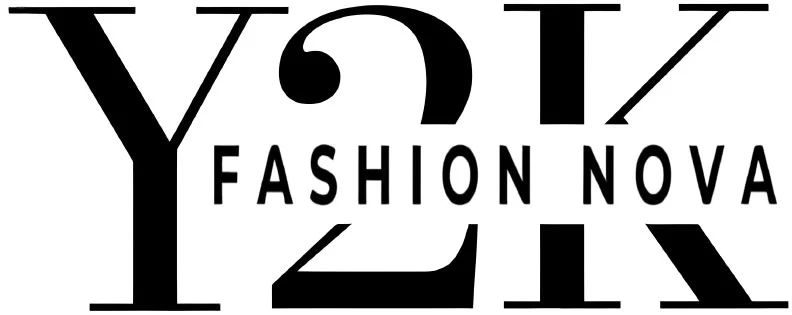

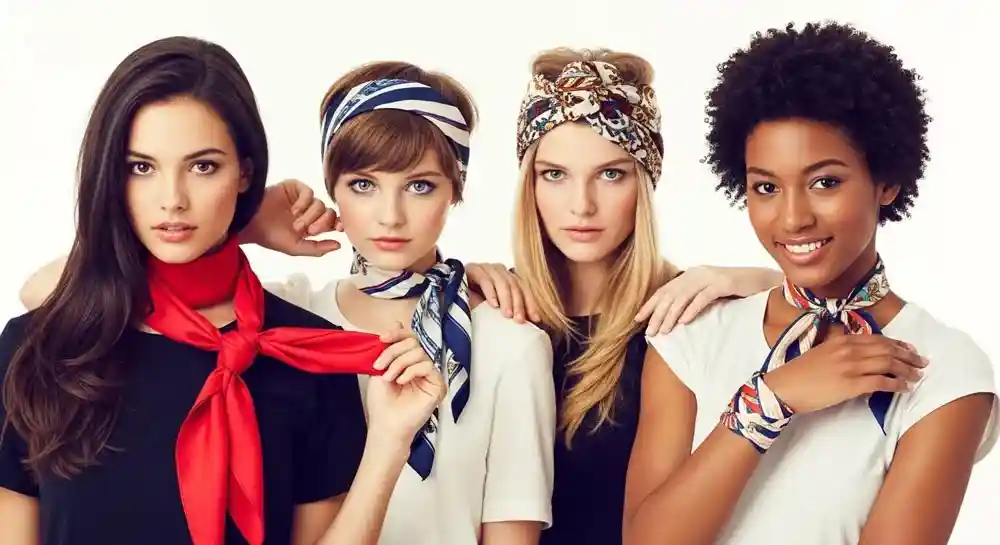




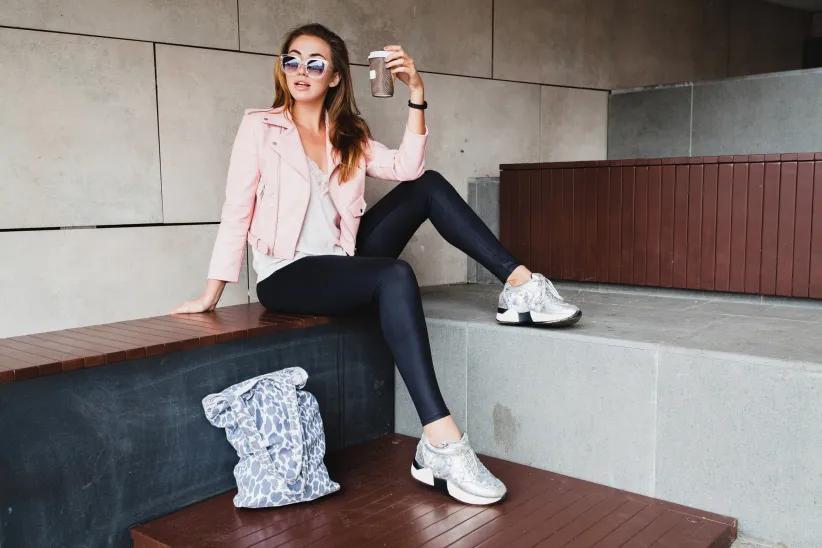
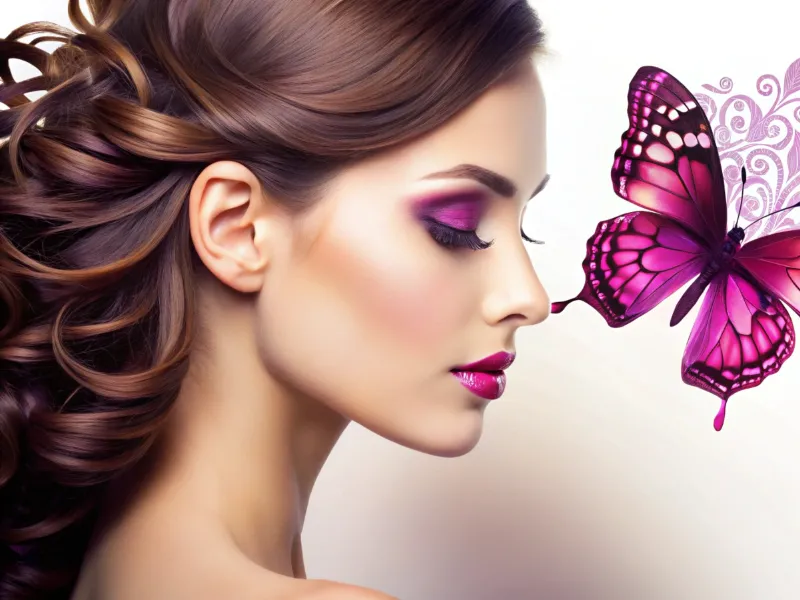
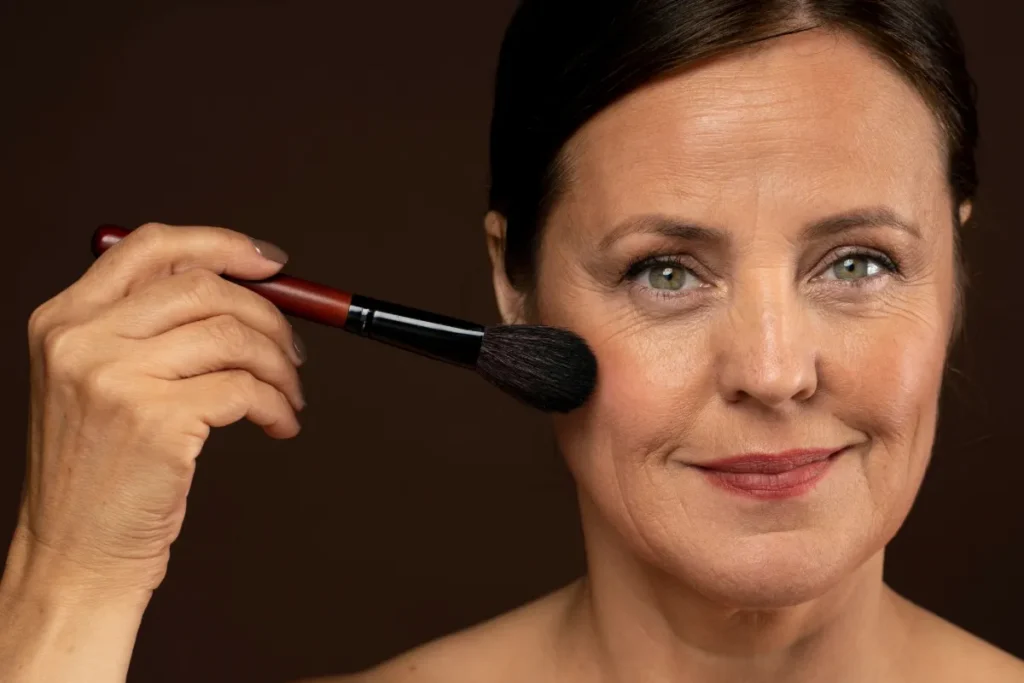
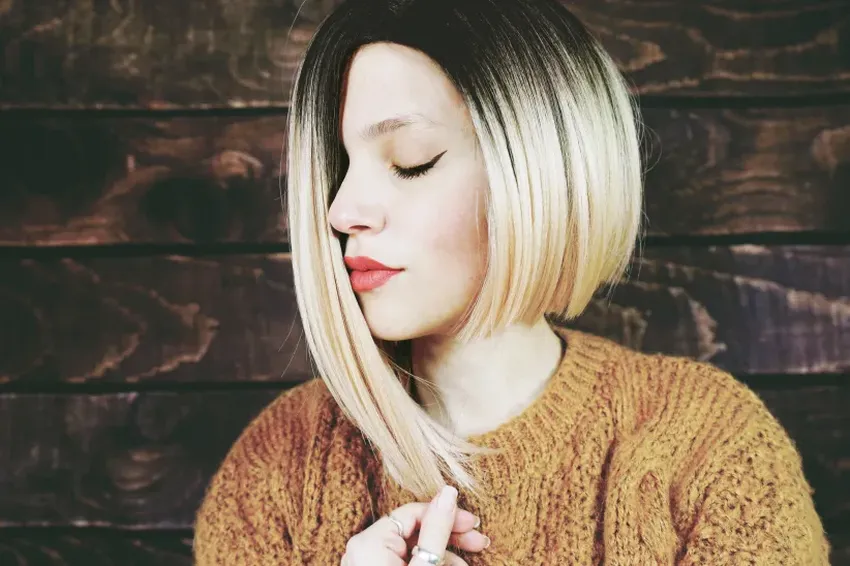
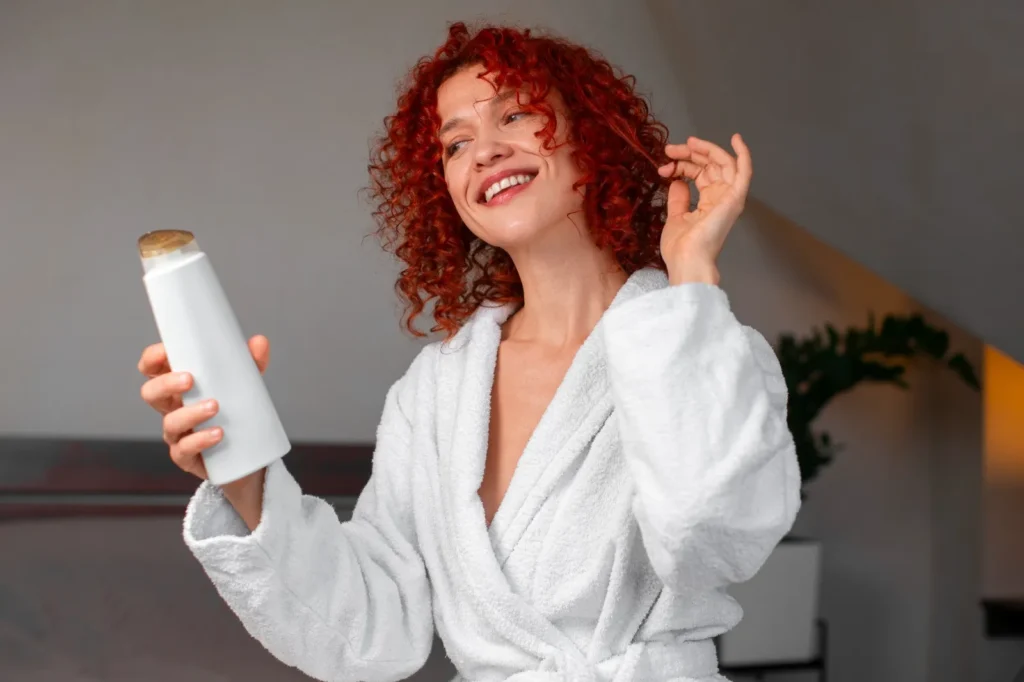


Vestibulum euismod, leo eget varius gravida, eros enim interdum urna, non rutrum enim ante quis metus. Duis porta ornare nulla ut bibendum
Rosie
6 minutes ago